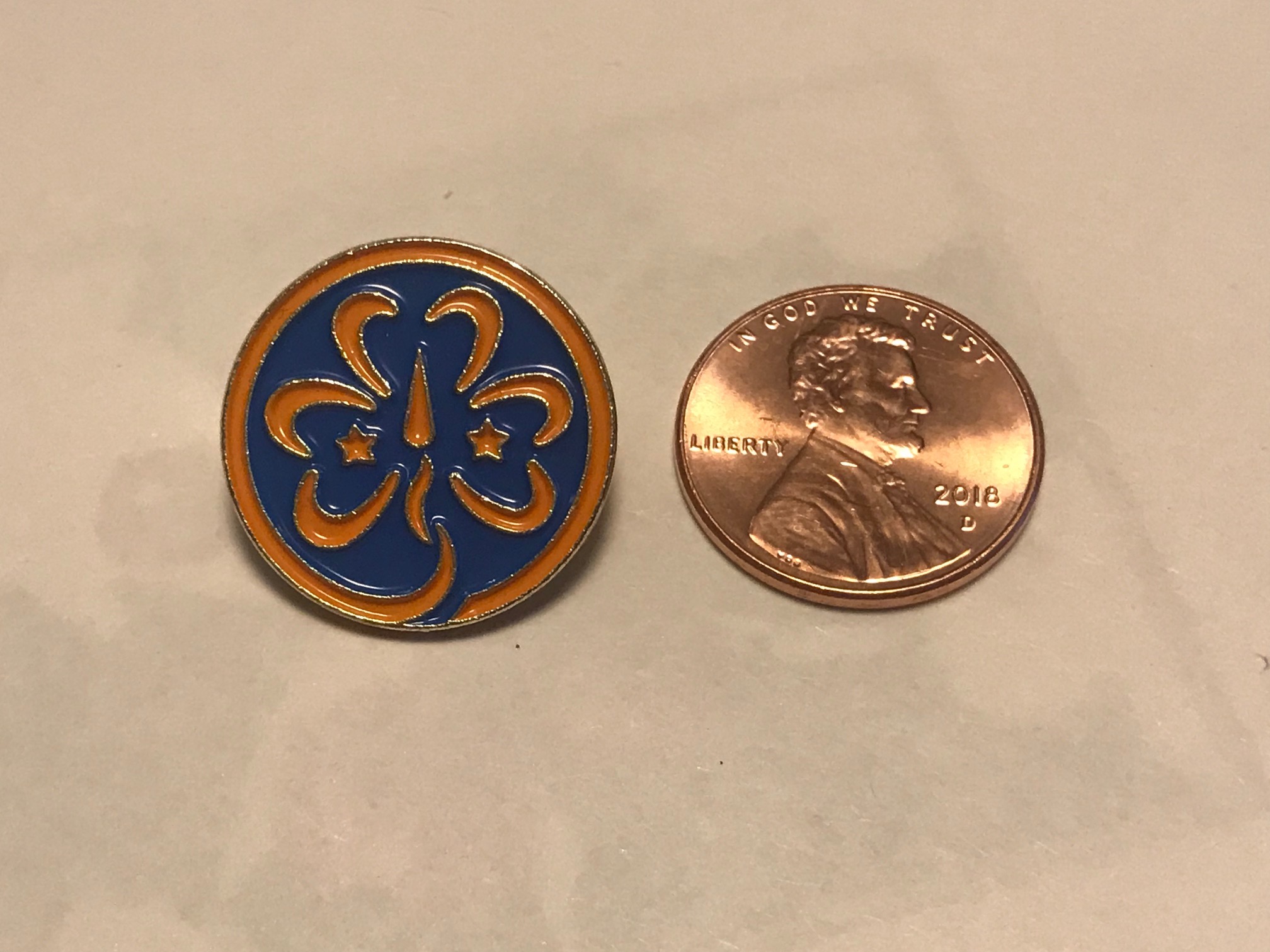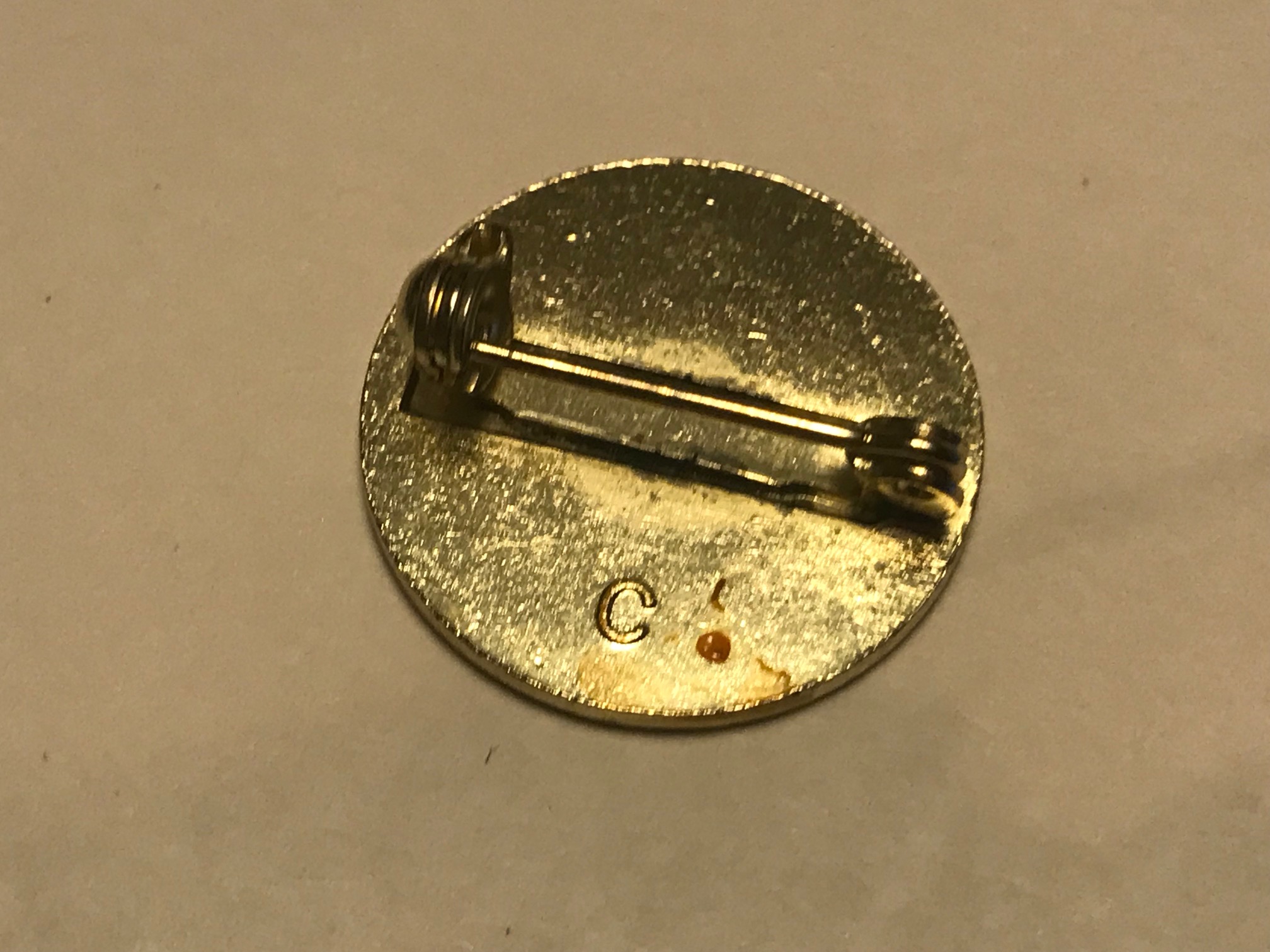Older Official Girlscout Badge / Pin: 39,000+/- 1,000 ppm Lead. 90 ppm is unsafe for kids.
 Enamel pins are often high Lead and the scouts have even had recalls for enameled items in recent years (link).
Enamel pins are often high Lead and the scouts have even had recalls for enameled items in recent years (link).
In general I avoid any enamel (from cookware to jewelry) unless I know it has been tested and found to be Lead-free (and Cadmium-free too). The Lead levels are usually just too high to make it worth the risk (even if the Lead is ostensibly “bound” in the matrix of the enamel.)
To see more scouting items I have tested, click here.
The amount of Lead found in the particular pin pictured here is VERY HIGH, especially given the modern regulatory standards for allowable levels of Lead in items intended to be used by children: 90 ppm Lead or higher is illegal in the paint or coating of an item and 100 ppm Lead or higher is illegal in the substrate.
This pin is also especially concerning given it is definitely small enough to be accidentally ingested by a child.
When tested with an XRF instrument this older (maybe 15 or 20 years old, I will double check with the original owner) official Girl Scout logo pin had the following readings (tests done for a minimum of 30 seconds):
The enameled front of the pin:
- Lead (Pb): 39,000 +/- 1,000 ppm
- Chromium (Cr): 4,388 +/- 652 ppm
- Zinc (Zn): 5,596 +/- 696 ppm
- Copper (Cu): 472,600 +/- 3,100 ppm
- Nickel (Ni): 403,800 +/- 473 ppm
- Iron (Fe): 6,386 +/- 473 ppm
- Titanium (Ti): 65,800 +/- 2,900 ppm
The back of the pin:
- Lead (Pb): 4,881 +/- 447 ppm
- Tin (Sn): 2,259 +/- 202 ppm
- Zinc (Zn): 19,400 +/- 1,000 ppm
- Copper (Cu): 738,600 +/- 2,800 ppm
- Nickel (Ni): 226,900 +/- 2,300 ppm
- Iron (Fe): 4,620 +/- 388 ppm
As always, thank you for reading and for sharing my posts.
Please let me know if you have any questions.
Never Miss an Important Article Again!
Join our Email List




